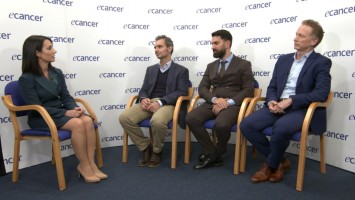The first talk is a very specific talk, it’s about the adult granulosa cell tumour. It’s a very rare disease, less than 2% of ovarian cancer, with a high topic in terms of management and in terms of diagnosis. We know now that the initial diagnosis, the histological initial diagnosis, is something very important because the management of the patients is completely different if we speak about frequent tumours versus this subgroup. We need to have molecular analysis; I mentioned the FOXL2 mutation and how it is important to implement the molecular analysis all over the world.
I also would like to focus on the fact that this disease is very well managed by the surgeon but after the surgery there are big problems for the patients because we don’t have a really nice drug for these patients and we need to organise at the international level a real collaboration to develop translational research but also a clinical trial dedicated to this disease.
I also mentioned that we will report at the ESMO this year the first randomised trial dedicated to [??] tumour where we will explore the combination of bevacizumab plus weekly paclitaxel versus weekly paclitaxel. It will be an important topic because it’s the first randomised trial in such a rare disease.
How many patients are involved?
Sixty patients were included in the Bayesian model so we don’t need to include more patients because we can see there that the PFS rate at six months will be the good endpoint to explore the combination versus the sequential treatment between weekly paclitaxel and bevacizumab. We know now that weekly paclitaxel is probably a very nice drug for these patients.
What are the issues with diagnosis?
The problem is that this disease is frequently a local disease and in this case we don’t need to have radical surgery. It’s a young patient, we need to be concerned about the fertility sparing surgery. So if we don’t have the right diagnosis but just an ovarian cancer patients will receive radical surgery and adjuvant chemotherapy and today for a stage 1, for example 1a, we don’t need radical surgery and we don’t need adjuvant treatment.
What are your concluding points for this talk?
The concluding point is that we need to work on this topic because it’s a rare disease and nobody would like to work on this topic until now because it is a niche and the pharma industry are not really interested in [??] disease. We need to consider that there are patients who are alone with such problems.
Can you tell us about your second talk?
Tomorrow I will pick on what is the rationale of the combination of PARP inhibitor and antiangiogenic agent in gynae cancer but more specifically in ovarian cancer because there is a right and a strong rationale to combine the two drugs. The first is that because both of the drugs alone report very nice results and so the combination could be really interesting. We have now several clinical and preclinical data to consider that the synergy is very interesting and we are waiting for a big phase III including PARP inhibitors plus bevacizumab to be available next year with the PAOLA-1 trial in first line. I hope again this randomised trial will be positive and if the randomised trial will be positive it will change the management and the routine practice for the patients with ovarian high grade serous carcinoma.
Any final thoughts?
Today we have more and more development in immune treatment and so we have to be careful that antiangiogenic agents are an important drug in ovarian cancer. We have to be careful not to forget this pathway in the management of ovarian cancer. I will be not surprised if in the near future the combination of IO plus antiangiogenic and PARP inhibitor will be the backbone of the management of these patients.








